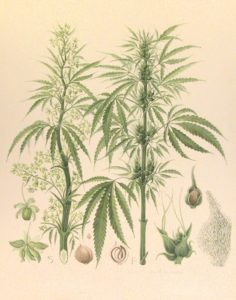 “Cannabinoids, broadly speaking, are a class of biological compounds that bind to cannabinoid receptors. They are most frequently sourced from and associated with the plants of the Cannabis genus, including Cannabis sativa, Cannabis indica, and Cannabis ruderalis.
“Cannabinoids, broadly speaking, are a class of biological compounds that bind to cannabinoid receptors. They are most frequently sourced from and associated with the plants of the Cannabis genus, including Cannabis sativa, Cannabis indica, and Cannabis ruderalis.
The earliest known use of cannabinoids dates back 5,000 years ago in modern Romania, while the documentation of the earliest medical dates back to around 400 AD. However, formal extraction, isolation, and structural elucidation of cannabinoids have taken place rather recently in the late 19th and early 20th centuries. Since then, numerous advancements have been made in further isolating naturally occurring cannabinoids, synthesizing artificial equivalents, and discovering the endogenous the endocannabinoid system in mammals, reptiles, fish, and birds.”



